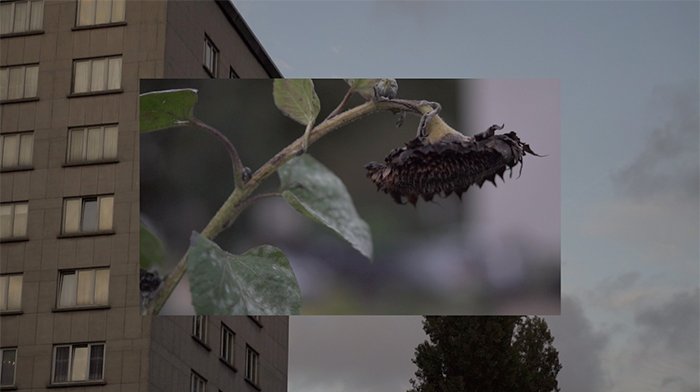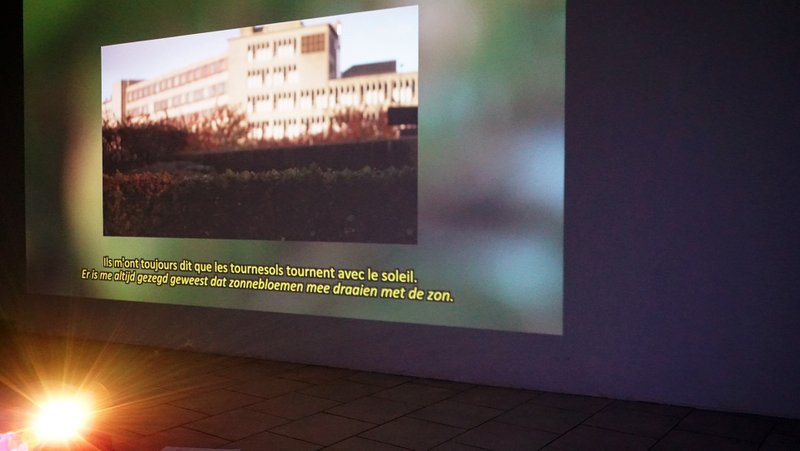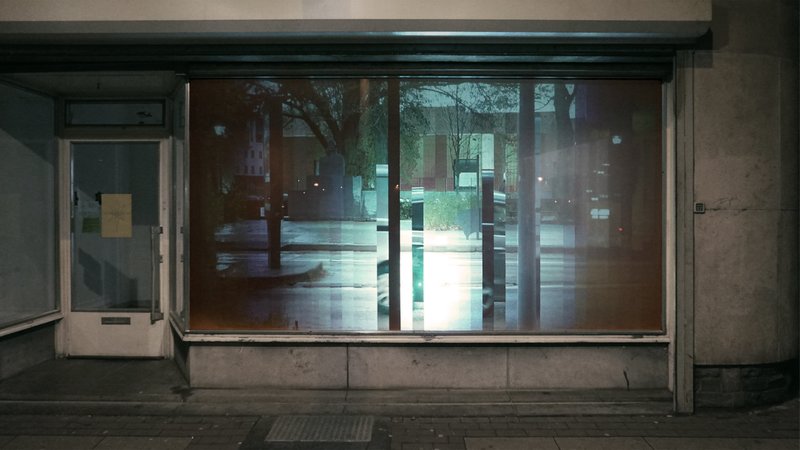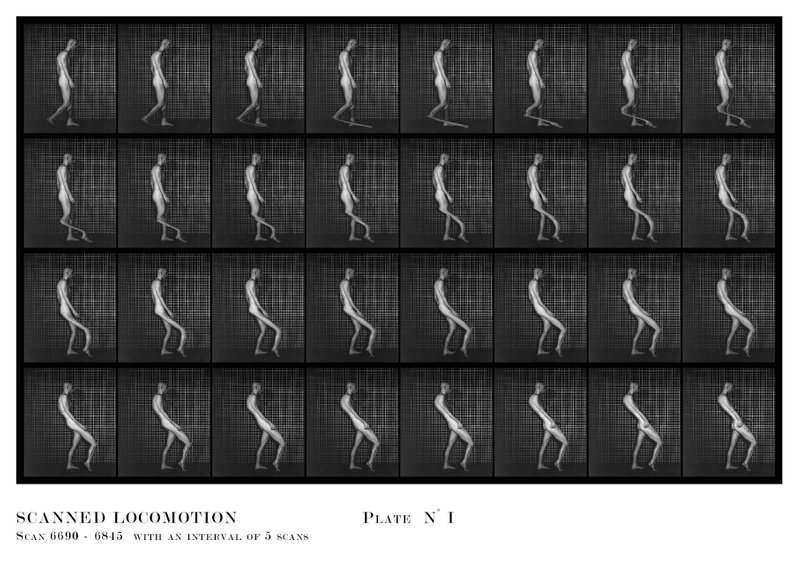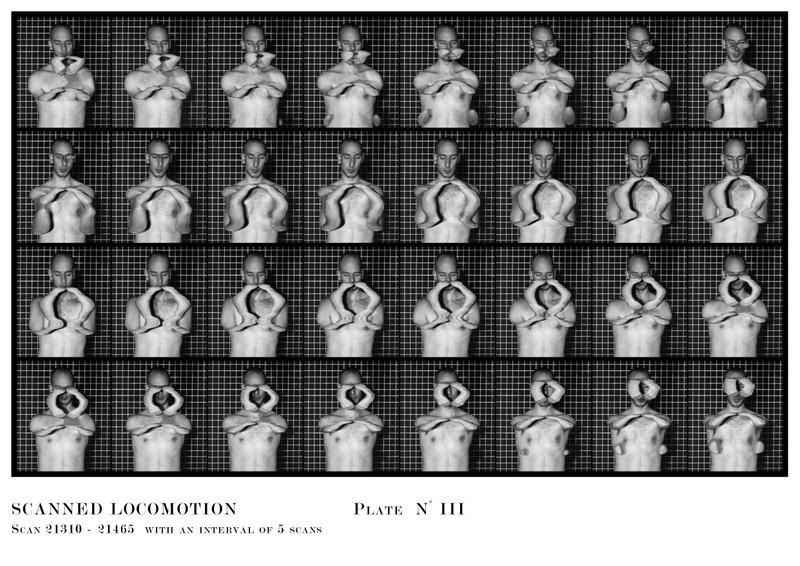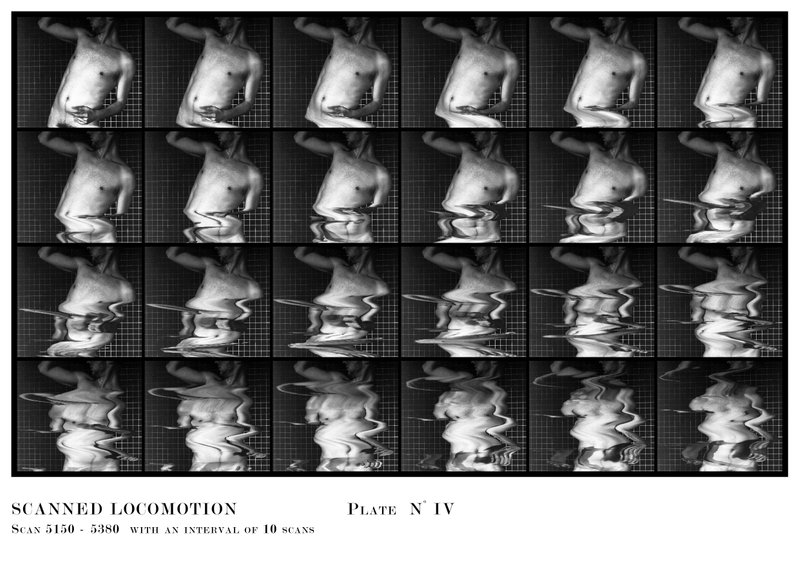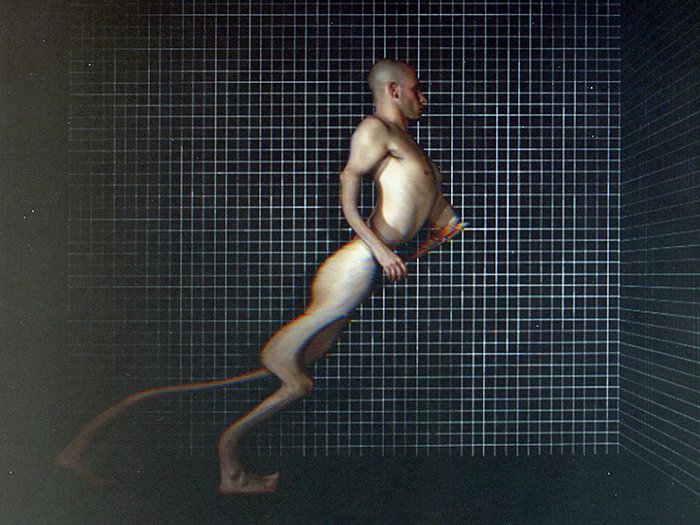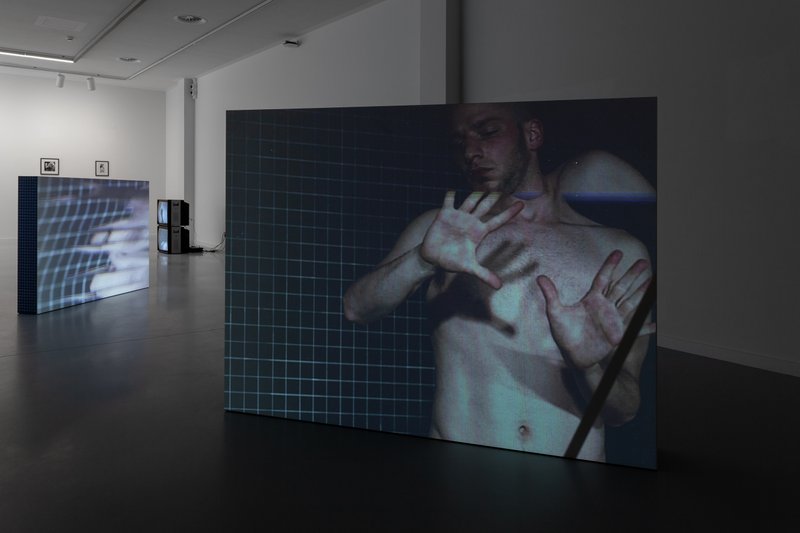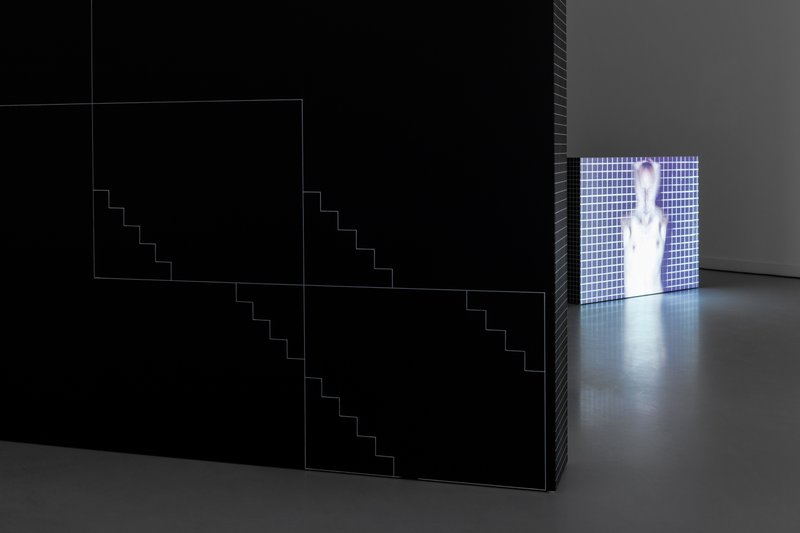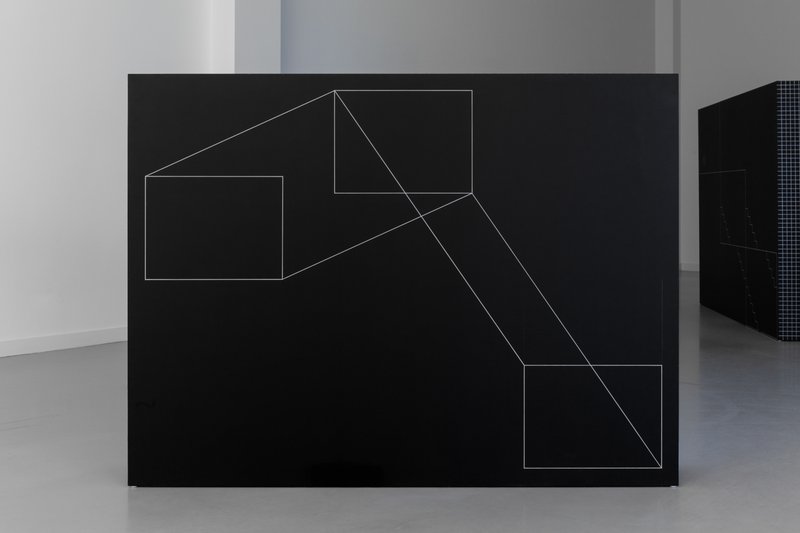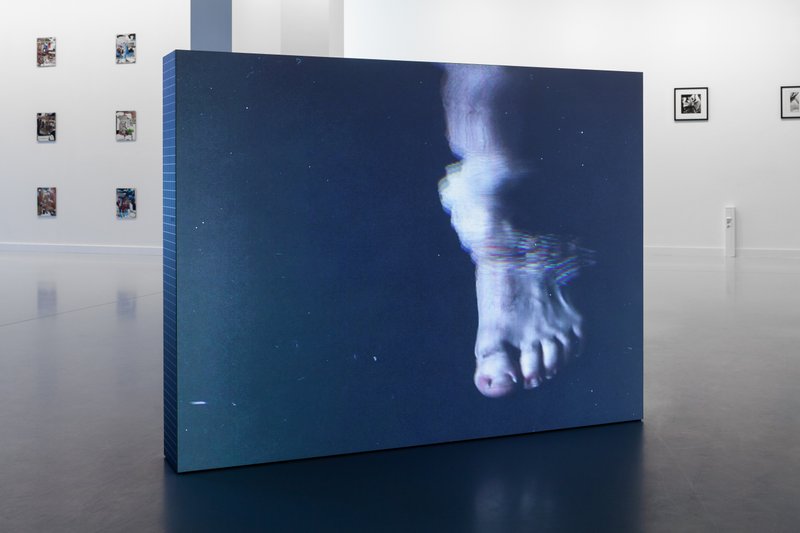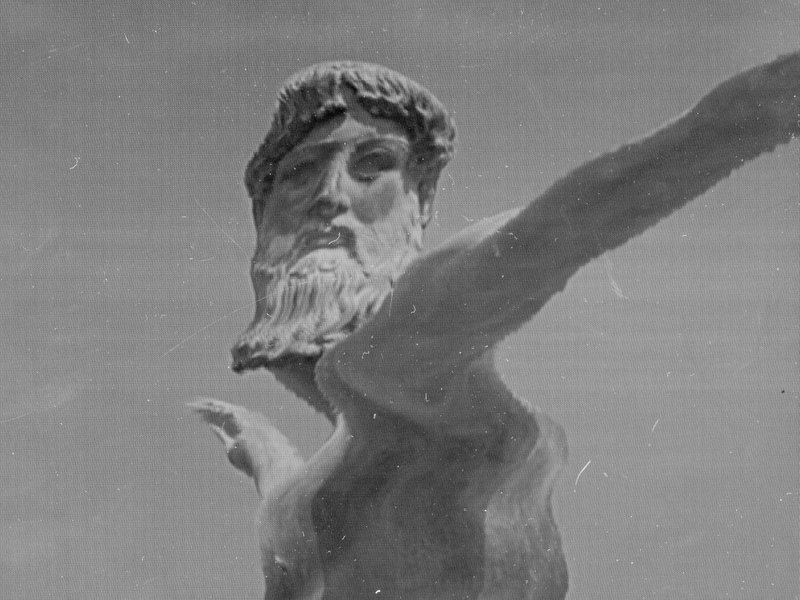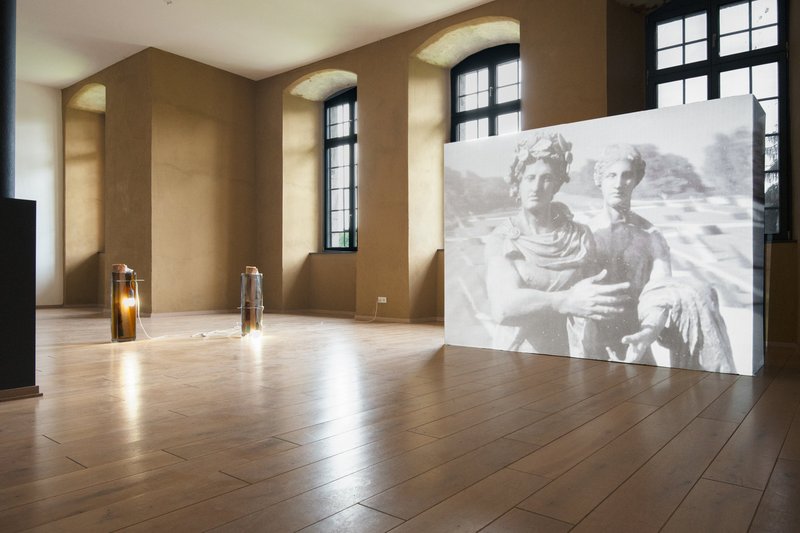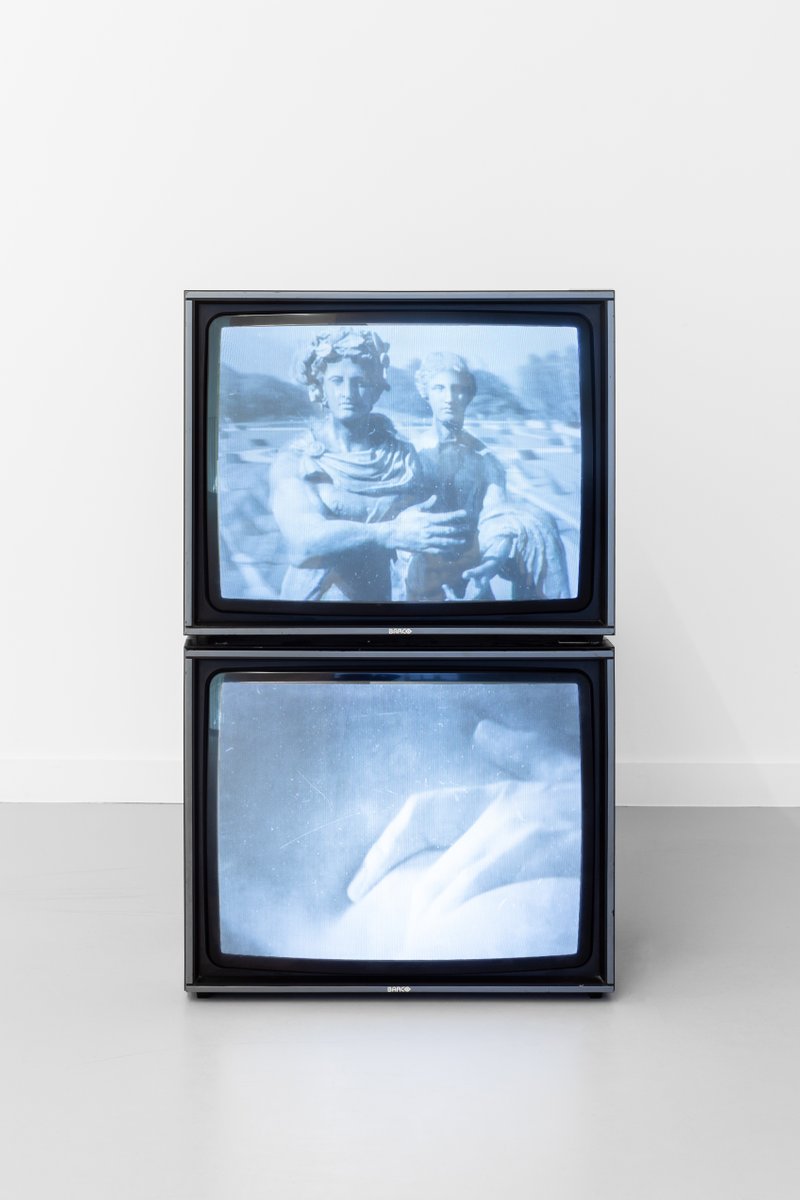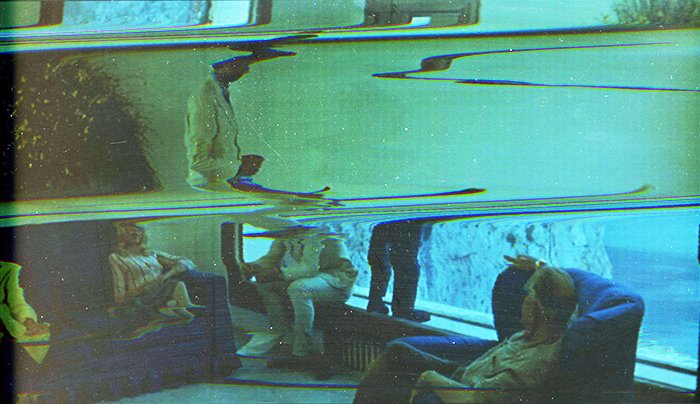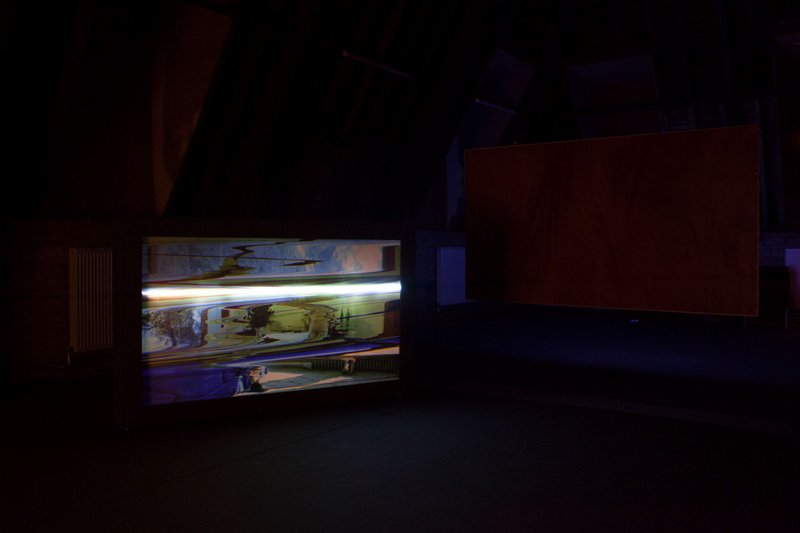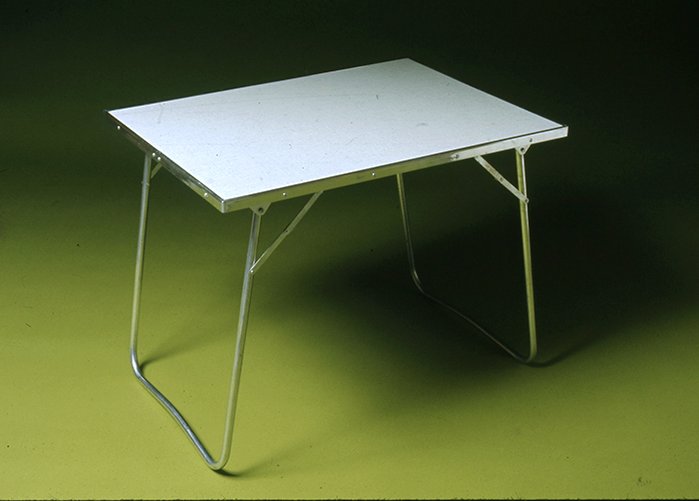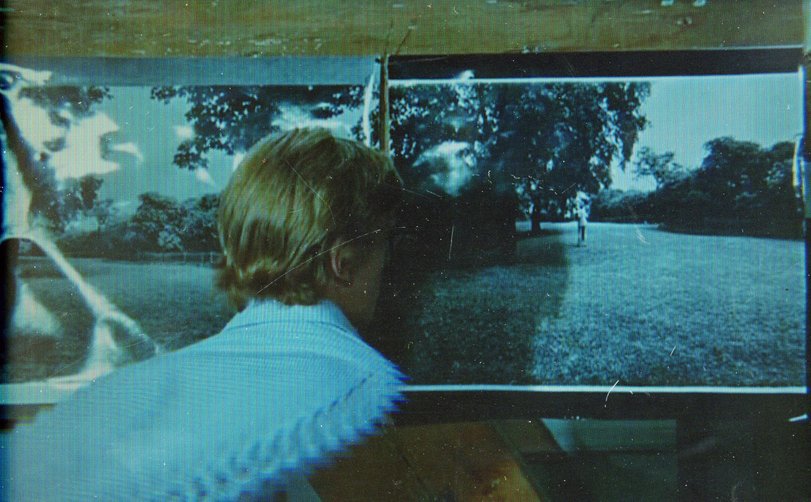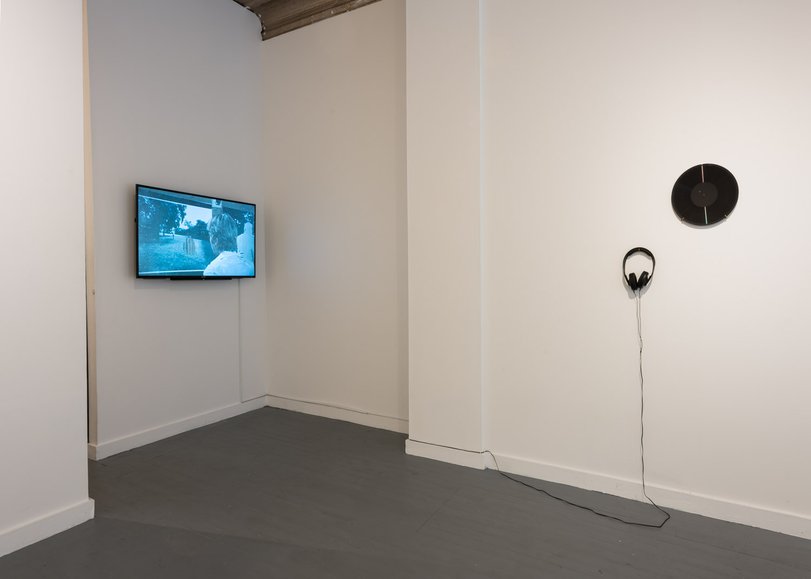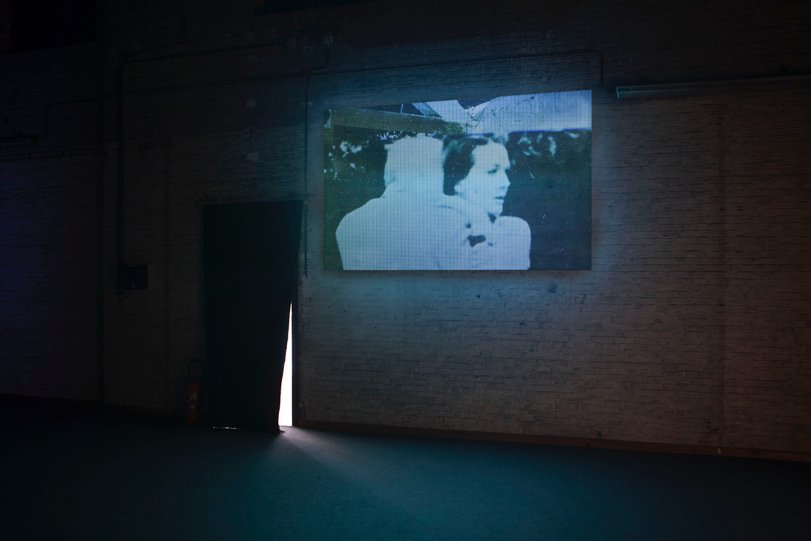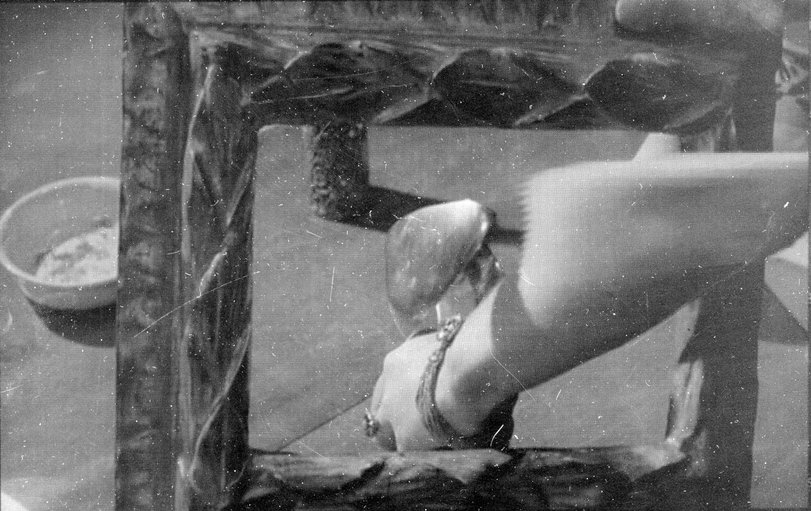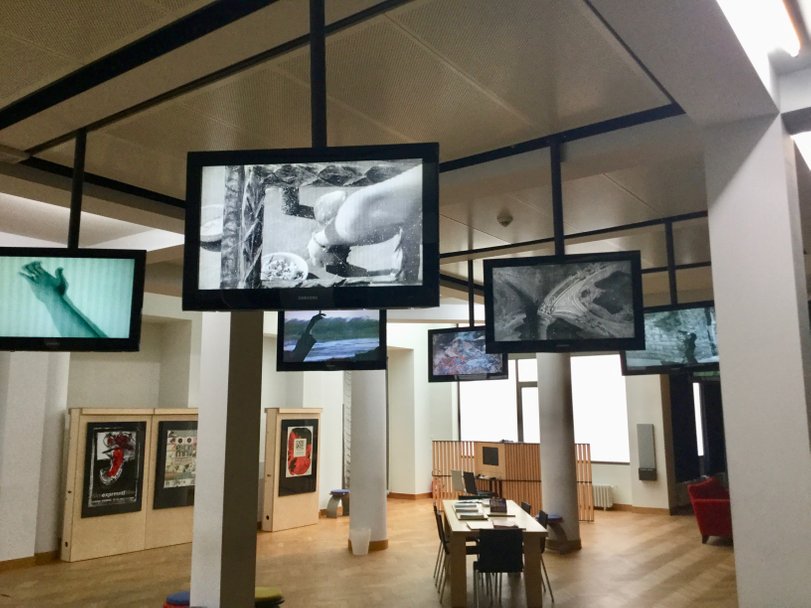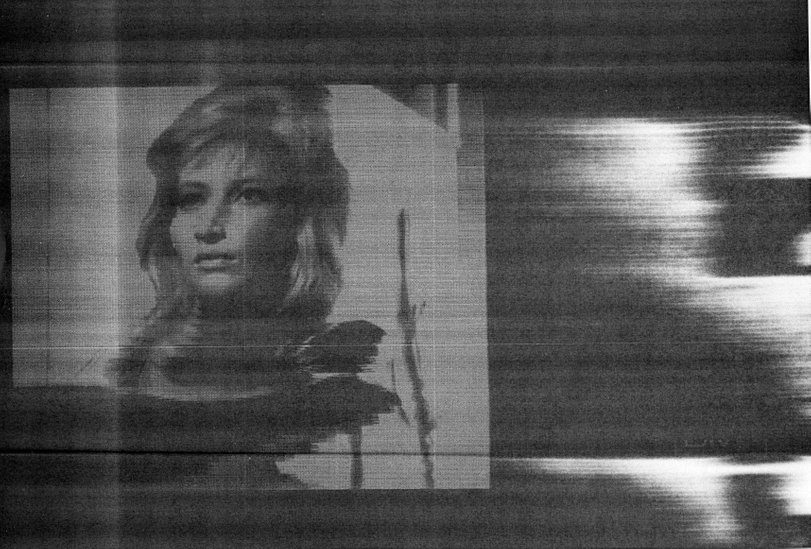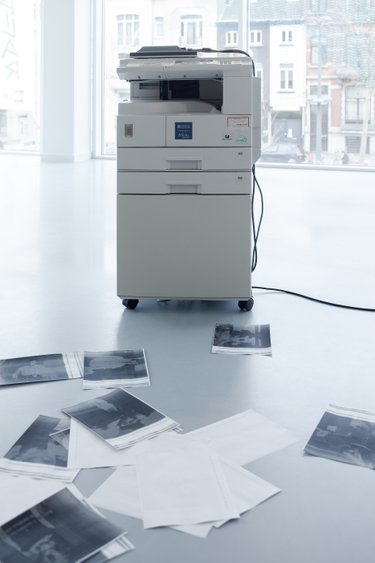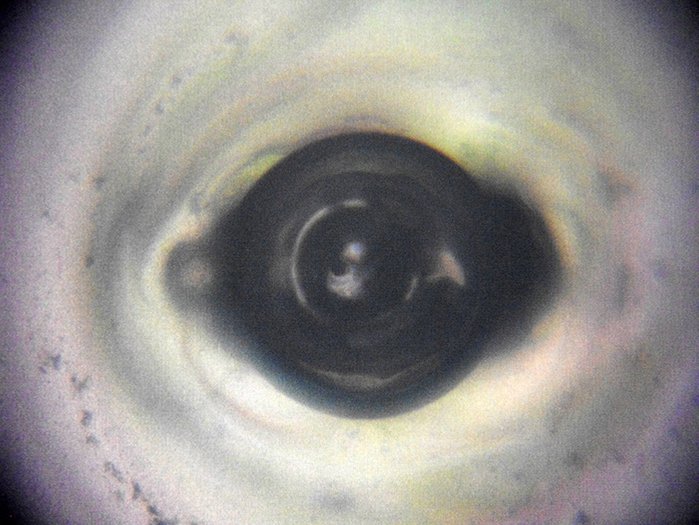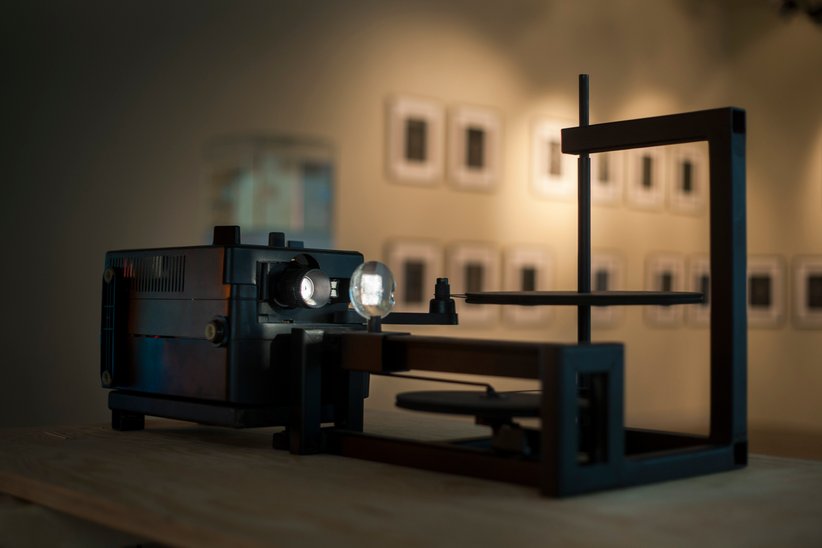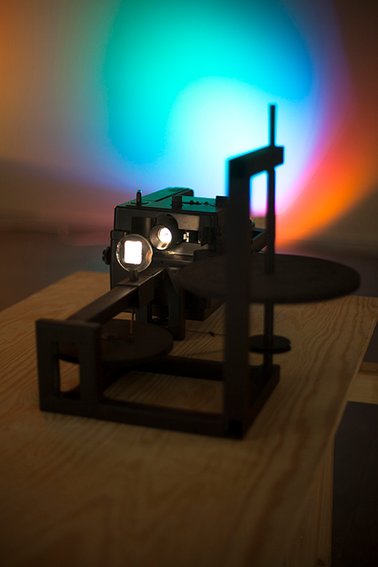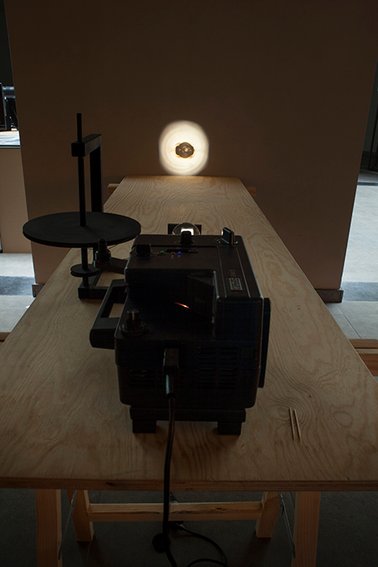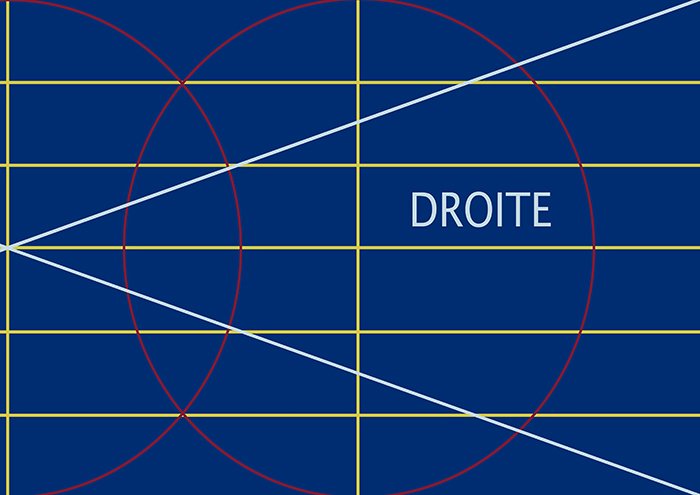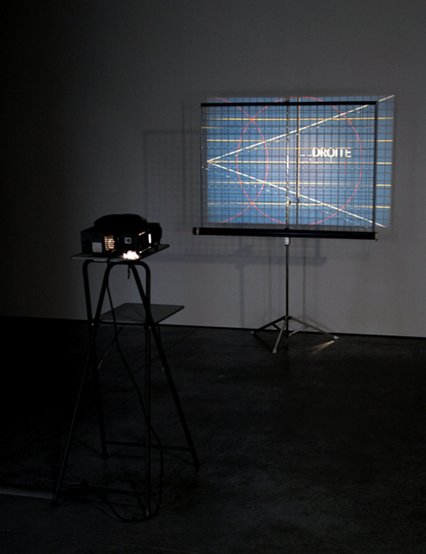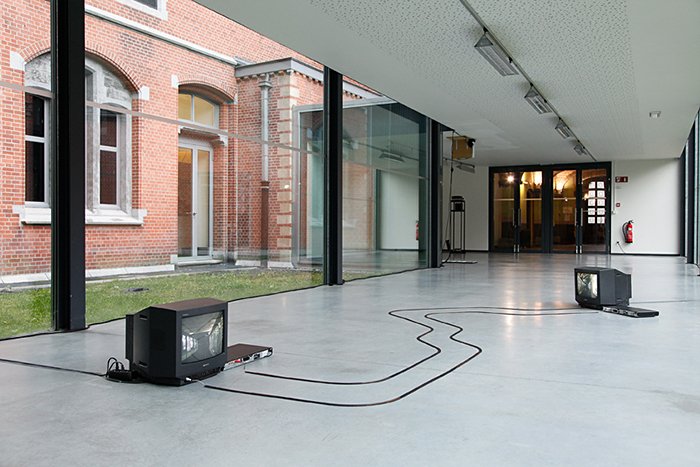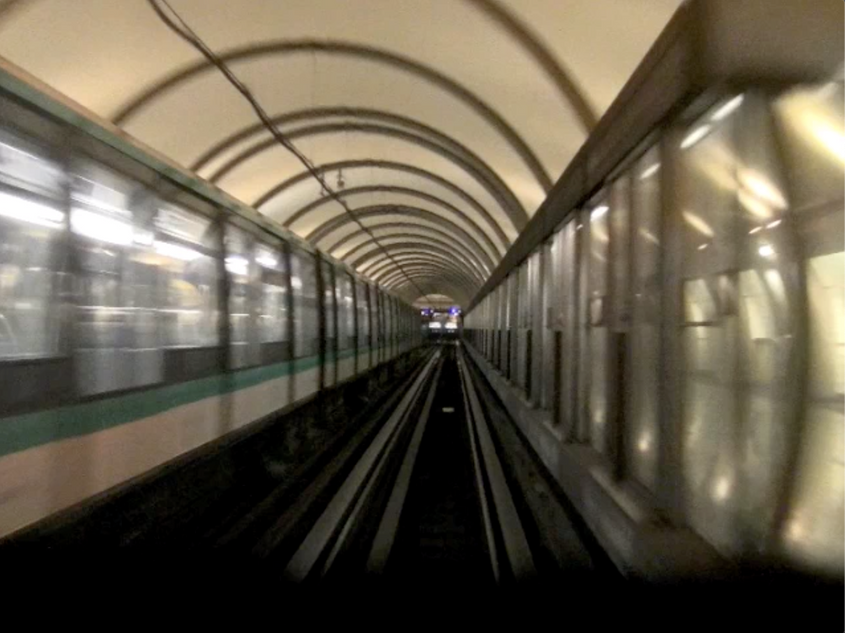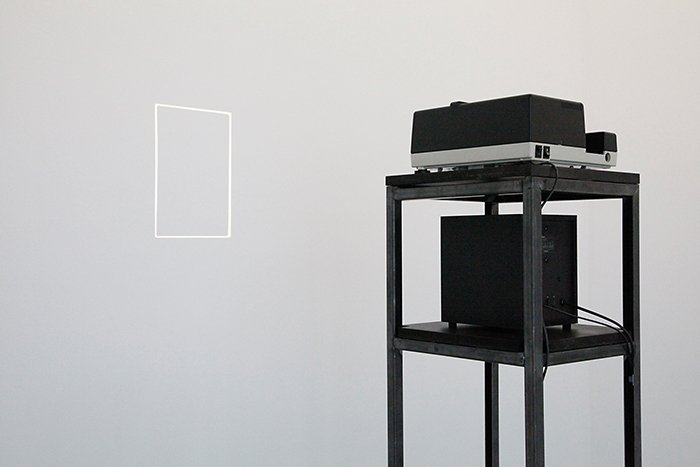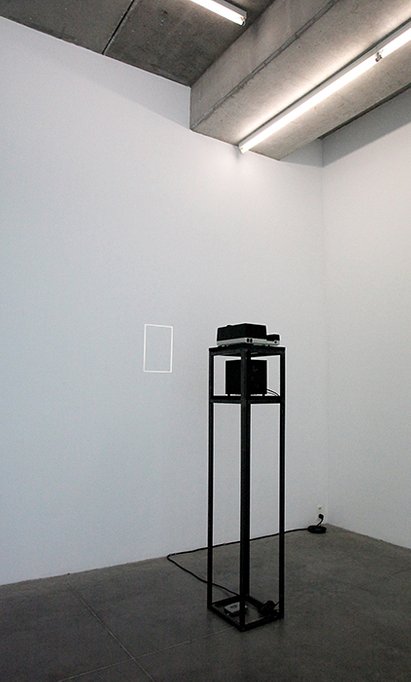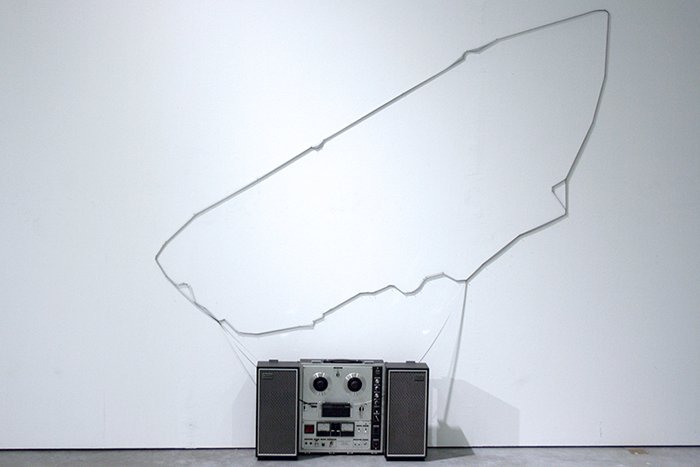* Deux Mains Fait Demain, 2024
Amine Lahrach & Benjamin Verhoeven
500 tiles (20x20cm each), cyanotype solution, brass frame
Exhibition view: Deux Mains Fait Demain, Lichtekooi Artspace, Antwerp (BE), 2024
Photo by Fabien Silvestre Suzor
* The Missing Piece, 2023
Amine Lahrach & Benjamin Verhoeven
Video installation, 42:00 min, metal structure, 49 cement tiles, brass
Exhibition view: La Promesse de l'Impreinte, Malhoun Artspace, Marrakesh (MA), 2023
* Square Albert I, (work in progress)
Digital Video, color, sound, 17:42 min, single channel
Still from ‘Square Albert I’
Still from ‘Square Albert I’
Exhibition view: Benjamin Verhoeven & Susannah Stark, KOMPLOT, Brussels (BE), 2019
“It's not that interesting. What I find interesting is the guy sitting on the bench, parallel to me. He entered the park with just a bag in his hand and sat down on the bench. Now he has taken off his jacket and is busy on his smartphone. His hair is shaved. I wonder if he's waiting for someone.”
How do you enter an unfamiliar neighborhood where camera's are not appreciated? What started as a commissioned project about Kuregem (a socially challenged Brussels district) turned into a videowork questioning the presence and legitimacy of the camera. The artist deconstructs his own gaze, projects fantasies and frustrations of the non-produced image. He continues to raise the main multi-layered and complex question of the presence of the camera in an attempt to understand the other. The footage used in this video was filmed during a four-month residency in 2019 at KOMPLOT, Brussels (BE).
*Le Passage du Tram 81, 2019
Digital Video, color, silent, 04:13 min, single channel
Still from 'Le Passage du Tram 81'
Installation view: Benjamin Verhoeven & Susannah Stark, KOMPLOT, Brussels (BE), 2019
This in-situ work was realized during a residency at KOMPLOT, Brussels (BE). This video shows every tram passing from dusk till dawn, edited together in one single channel video. The video is being projected on the same window through it was recorded.
*Scanned Locomotion Plates, 2019
B&W archival prints, various dimensions
This series of prints are extracted from the scan-archive of the ‘50.000 SCANS’ video. They are meant to display and emphasize the change in time between the scans.
*50.000 SCANS, 2017
Stop-motion video from scanned moving images, color, sound, 22:28 min.
Both single-screen as multi-channel
Excerpt: https://vimeo.com/402542972
Still from 50.000 SCANS
Still from 50.000 SCANS
Still from 50.000 SCANS
Still from 50.000 SCANS
Exhibition view: The wilderness hidden underneath, Pilar - VUB, Brussels (BE), 2020
Photos by Silvia Cappellari
Exhibition view: The wilderness hidden underneath, Pilar - VUB, Brussels (BE), 2020
Photos by Silvia Cappellari
Exhibition view: The wilderness hidden underneath, Pilar - VUB, Brussels (BE), 2020
Photos by Silvia Cappellari
Exhibition view: The wilderness hidden underneath, Pilar - VUB, Brussels (BE), 2020
Photos by Silvia Cappellari
‘50.000 Scans’ focuses on how the choreography of a human body functions in the scanned reality. It explores this scanned dimension and holds it against the historical birth of film and the registration of movement through the medium of photography (E.J. Marey, E. Muybridge). Each Act deals with a different variation on both montage-technique as camera-movement.
The sound is adapted to the same scan-process as the images.
*Sculptural Movement: Chapter I & II, 2016
Stop-motion video from scanned moving images, b&w, silent, 12:17 min., single-screen
Excerpt: https://vimeo.com/327691909
Still from Sculptural Movement: Chapter I & II
Still from Sculptural Movement: Chapter I & II
Still from Sculptural Movement: Chapter I & II
Exhibition view: Sculptuur Bredelar / Hybrid Modus, Bredelar(DE), 2016
Installation view: The wilderness hidden underneath, Pilar - VUB, Brussels (BE), 2020, Photo by Silvia Cappellari
Sculptural Movement: Chapter I & II consist of 20.000 scans put together in a stop-motion film.
Within this piece, the relations between Film (celluloid) and Sculpture (marble) are being explored.
‘Chapter I’ researches the cinematic moving (mobile point of view) of the sculpture.
‘Chapter II’ researches the photography (fixed point of view) of the sculpture in a book, within a moving image.
*Reconstruction of a scanned
cinematographic space I, 2015
Wooden lightbox, backlit print, plexiglass, scan mechanism, Led-strip,
136 x 221 x 30 cm
Documentation: https://vimeo.com/168627026
Exhibition view: The Gathering of Characters and Forms: Final Chapter, DASH, Hopstreet Gallery, Brussels (BE), 2015
Close-up backlit print
Exhibition view: Final Show HISK, Ghent(BE), 2015
The light box lightens up the scan-print from behind with a strip of light in an up-to-down sequence. The lighted parts are simultaneously lid according to the speed of the original fragment
The selected source-material stems from Jean-Luc Godard’s ‘Le Mèpris’. In this shot the camera turns 360° within the interior of Villa Malaparte in Capri and registers in this specific way the space. By using this fragment, the light box lightens up the cinematographic space within one image.
*Table setting, 2015
Five glass sheets with transparent print, wooden base, 50 x 35 x 17 cm
Close-up image
Installation view
By placing gradually the transparent prints, the tabletops form a shifting frame, which resembles the scan-schedule.
*Somebody was trying to kill somebody else, 2014
Stop-motion video from scanned moving images, color, sound, 06:14 min.
Single-screen
Excerpt: https://vimeo.com/404967312
Still from Somebody was trying to kill somebody else
Still from Somebody was trying to kill somebody else
Exhibition view: Fragmented Time, Catinca Tabacaru Gallery New York (USA),2016
Exhibition view: Final Show HISK, Ghent(BE), 2015
‘Somebody was trying to kill somebody else’ is a stop-motion movie consisting of scanned images. The chosen fragments are a re-montage of the movie ‘Blow-up’ by Michelangelo Antonioni. The original soundtrack of Herbie Hancock has undergone the same process as the images. The movie consists of 10.000 scans.
*Scanned Movements, 2014-…
Stop-motion videos from scanned moving images, B&W / color, silent, various durations, loop
Scanned Movement#1
Scanned Movement#2
Scanned Movement#3
Scanned Movement#4
Scanned Movement#5
Still from Scanned Movement #4
Still from Scanned Movement #1
Exhibition view: Cinematek, Brussels(BE), 2016
The series ‘Scanned Movement’ is a collection of scanned shorts. These fragments are taken from movies that question the cinematic frame or deal with the concept of time within cinema. By physically scanning them frame per frame and putting them into an animated stop-motion loop, the images receive another context and reality. This specific scan-registration deconstructs time within camera movement, between montage and through the movement of the protagonist.
*Untitled(Scanning Cinema), 2014
Xerox-machine, monitor, mac mini, arduino
Print example
Exhibition view: The wilderness hidden underneath, Pilar - VUB, Brussels (BE), 2020
Photo by Silvia Cappellari
Impression of the sorting process
A monitor is placed screen down on a Xerox-machine. The movie that runs is a fragment of ‘L’Eclisse’ from Michelangelo Antonioni. Every minute, the Xerox-machine takes a copy of the screen.
The result (the print) falls on the ground. The visitors are free to take a print with them. The remaining prints are being sorted and put in a booklet
*EYE, 2013
8mm-projector, glass lens, black metal mechanism
Exhibition view: Het Plateau-Effect, Filmfest Gent/Zebrastraat, Ghent(BE), 2013
Exhibition view: Het Plateau-Effect, Filmfest Gent/Zebrastraat, Ghent(BE), 2013
Exhibition view: Het Plateau-Effect, Filmfest Gent/Zebrastraat, Ghent(BE), 2013
The 8mm-projector is placed on his side and runs without projecting a movie. It only projects white light. Placing a lens in front of the projector, an eye-like projection is being formed. The winding wheel of the device gives movement to the mechanism that slides the lens back and forth, forcing the projection to shift between the eye and a rectangle.
*GRID, 2013
Kodak carousel-projector, slide, projector table, projection screen, metal grid
Slide
Exhibition view: La vie: mode d’emploi, KASK, Ghent(BE), 2013
Exhibition view: La vie: mode d’emploi, KASK, Ghent(BE), 2013
A metal grid replaces the fabric screen. Instead of projecting on the screen, the light falls through the screen on the wall behind. The slide itself is a mathematical visual tool for a multiple projection set-up.
*Ligne 14, 2012
2 monitors, 2 dvd players, miniature rails, 4 cinch connections
Exhibition view: Circuits of the past, KASK, Ghent(BE), 2012
Photo by Katrin Kamrau
Footage displayed on the monitors
Each monitor is connected with an opposing player. The video signal is transferred through the tracks. The figure of the tracks resembles the form of the subway n°14 in Paris. The footage on the monitors are a back and forth ride Olympia <-> Saint-Lazare.
*000101101001101010101010101010, 2012
Slide projector, slide, recorder, cassette, amplifier, metal base
Exhibition view: Hopstreet Gallery, Brussels(BE), 2012
Photo by Katrin Kamrau
Exhibition view: Hopstreet Gallery, Brussels(BE), 2012
Photo by Katrin Kamrau
The recorder loops the sound of the videogame Atari-Pong. You hear a soft combination of ‘Pongs’. Meanwhile a rectangle of light is continuously projected on the wall.
*E.P.O., 2011
Two black tables, Television, tripod, camera, 8mm-projector, Black glass plate with stand
Exhibition view: BYTS, Stedelijk Museum, ‘s Hertogenbosch(NL), 2011
photo by Peter Cox
Exhibition view: Hopstreet Gallery, Brussels(BE), 2012
Photo by Katrin Kamrau
The camera is connected to the T.V. and livestreams the setting. Placing a black plate between them stops the constant looping. The projector projects a cycling race on the recorded black plate, so it seems it is playing something different than the factual T.V.
*Jacky X, 2012
Taperecorder, sound tape, nails
Exhibition view: IKG meets KASK, Ghent(BE), 2012
The sound on the soundtape is a recording of one lap on the Formula 1 circuit of Le Mans. The form on the wall, around which the tape loops, is the top view of the circuit.


















